
 HMS WESTCOTT
HMS WESTCOTT Click on the links to more detailed accounts by the men who served on HMS Westcott and for a more detailed chronolgy
see www.naval-history.net
Commanding Officers
| Lt
Cdr C R Peploe (March 1918 – Jan 1921) Lt Edward N. Mortimer (Jan 1921 – 15 Dec. 1922) Lt Cdr Samuel A. Brooks (14 Dec. 1922 – 16 March, 1923) Lt Cdr Samuel A. Brooks (27 Sept. 1923 – 14 Aug. 1925) Lt Cdr Alfred C. Collinson (14 Aug. 1925 - Lt Cdr Meredith S. Spalding RN (Dec 1928 - July 1930) Lt Cdr Arthur D. B. James (22 July, 1930-) Lt Cdr Geoffrey R. B. Back (22 July, 1932 – 28 July, 1934) Lt Cdr Charles Nugent Lentaigne, RN (30 Sept 1936 - 1 Jan 1937) |
Cdr Edward Masterman Loly (1 Jan. 1937 - 11 April 1938) Cdr Cyril Joseph Firth (11 April - 1 Sept 1938) Cdr James Alexander Corrie Hill, RN (Sep 1938 – Sep 1939 or 14 Feb 1940) Lt Cdr William Francis Rodrick Segrave, RN (21 Aug 1939 or Feb 1940 – 2 Feb 1941) Cdr. Ian Hamilton Bockett-Pugh, RN (Feb 1941 - March 1943) Lt Cdr Hedworth Lambton, RN (May 1943 – Jun 1944) Lt Cdr Edward Perry Reade, RN (Oct 1944 – Jun 1945) Lt J S de B. Smith (Jun 1945 - |
Officers
Further
names from the
Navy List will be added later.
| Lt.
C P d’A Aplin, RNR (Dec 1940 - Lt. F C V Brightman (Aug 1938 - Tempy. Lt. N D Britton RNVR (Oct 1943 - Gunner C W Chadwick (April 1939 - S.Lt. S B de Courcy-Iceland RN (1918 – 1919) Tempy. Surg. Lt. P U Creighton, MB, BCh, RNVR (Oct 1944 - Gunner (T) M Daniels (May 41- Lt.(E) R J H Duffay, MBE (July 1938 - Boatswain D H Easter (May 1940 - Lt. J N Elliott (April 1940 - Lt. Stuart M.W. Farquharson-Roberts RN (June 1943 - Lt Arthur Lewis Gulvin RN (Feb - April 1940) Tempy. Lt. W J C Higgs, RNVR (Oct 1944 - Tempy. S.Lt. N J Hill, RNVR (June 1945 Lt. G R D Holland (May 1941 - Mid. L T H Johnson RNR (Aug 39 - Lt David Charles Kinloch RN (July 1930 - Jan 1932) Tempy. Gunner F B Leathers (April 1943 - Tempy. Surg. Lt. J D Loughborough, MRCS, LRCP, RNVR (Jun 1943 - Tempy. Surg. Lt. J D Manning, MRCS, LRCP, RNVR (Jul 1941- |
Tempy. Lt. A R A Marshall, RNVR (June 1943 - Gunner (T) S T Newman (act) May 1945 - Tempy. Act. S.Lt. A G C M Nightingale, RNVR (May 1941 - Lt Denzil Richard Cranley Onslow RNR (Nov 1942) Lt. C A H Owen (Aug 1937 - Lt. A Parsons, RNVR (Oct 1944 - Tempy. Act. S.Lt. W B Potts, RNVR (Apr 1944 Tempy Lt.(E) G R Raeburn, RNR (Jan 1944 - Tempy. S.Lt. W A Reeve, RCNVR (Dec 1943 Tempy. Lt. T S Riches, RNVR (Jun 1943 - Gunner J F Sangwell (April 1937 - Tempy. Surg. Lt. R Scott, MB, BS, RNVR (Jun 1940 - July 1941) Lt. J S de B. Smith (Jan 1945 - Tempy. Wt. Eng. A F Stapleton (Dec 1940 - Gnr Walter James Taylor RN (Sept 1936 - Feb 1937) Lt. N J M Teacher (Feb 1939 - Lt. A G Vanrenen (Dec 1941 - Lt Cdr Arthur Oliver Watson RN (Sept 1934 - July 1935) Tempy. S.Lt. J C Whitehead, RNVR (May 1945 - Lt. (N) W Whitworth (April 1937 - |
Former Full Members of the V & W Destroyer Assoociation who served in HMS Westcott
W. Ames (Newbury, Berks), A. Beckett DSM (Warrington, Lancs), Tom
Chapman (Chorley, Lancs), HJ. Dixon (Kidlington, Oxon), Clifford
"Stormy" Fairweather (Colchester, Essex),
Allen Flisher (Leicester), Arthur Gardner (Bexleyheath, Kent), E. Grew
(Waltham Cross, Herts), F. Lees (Rochford, Essex), B. Merry
(Leicester), G. Moore (Chessington, Surrey),
Ernest Quarrie (Carlisle), Bob Smale (St Helier, Jersey), L. Turner
(Bicester, Oxon), J. Underwood (Ilford, Essex), E. Woods (Sunderland).
Please get in touch if you have a family member who served in HMS Westcott
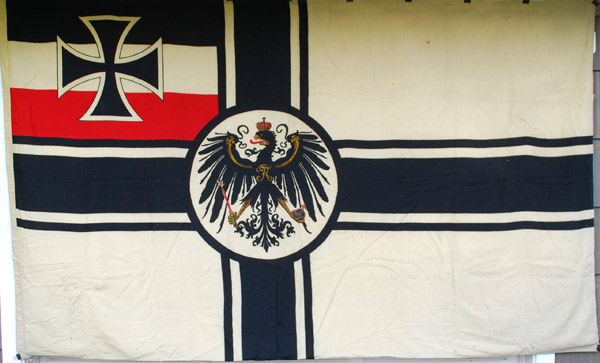
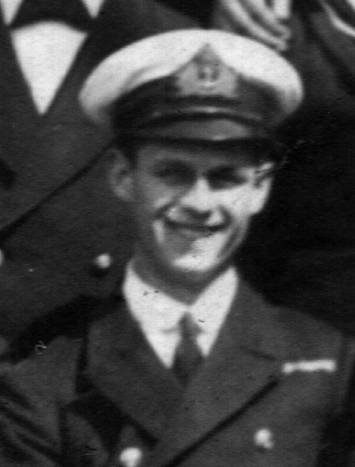 Sub
Lt S.B. de Courcy-Ireland RN (on right) witnessed the 72 ships in the German High
Sea Fleet being escorted into the Firth of Forth to surrender from the
deck of HMS Westcott on the 21 November 1918 and
was part of the escort when they were conducted to Scapa Flow in Orkney
to be interned while the allies argued about what to do with them. My
18 year old father was stationed at Houton Bay Air Station as an
Observer Gunner on anti-submarine patrol in Short 184 seaplanes and saw
them enter the Flow and anchor between Houton Bay and Hoy on the 24th
November. Their crews were demoralised and mutinous but made no trouble
and when the Home Fleet was at sea two destroyers were left behind as
Guard Ships.
Sub
Lt S.B. de Courcy-Ireland RN (on right) witnessed the 72 ships in the German High
Sea Fleet being escorted into the Firth of Forth to surrender from the
deck of HMS Westcott on the 21 November 1918 and
was part of the escort when they were conducted to Scapa Flow in Orkney
to be interned while the allies argued about what to do with them. My
18 year old father was stationed at Houton Bay Air Station as an
Observer Gunner on anti-submarine patrol in Short 184 seaplanes and saw
them enter the Flow and anchor between Houton Bay and Hoy on the 24th
November. Their crews were demoralised and mutinous but made no trouble
and when the Home Fleet was at sea two destroyers were left behind as
Guard Ships. 
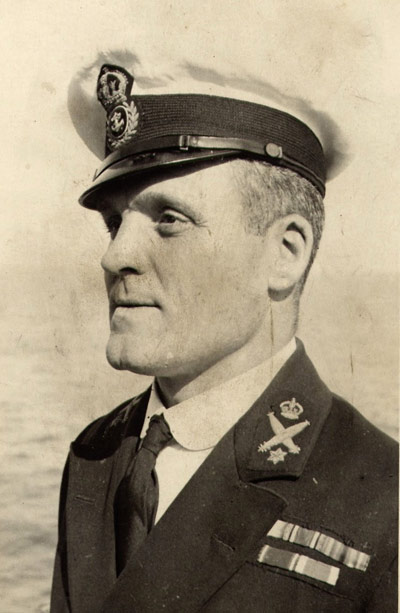 George Little, Torpedoman
George Little, Torpedoman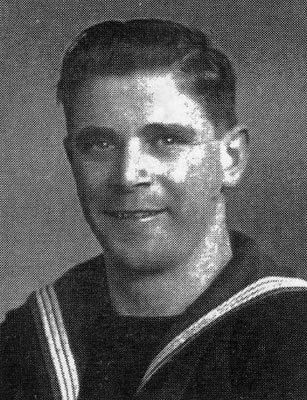 HMS Westcott
was
re-commissioned on 2 October 1936 for service as a tender to the
4th Submarine Flotilla, China (and the China Deep Diving Unit). Part of
the ship’s role was to act as a target for submarine attacks and before
leaving Devonport for Hong Kong in November 1936 her
aft (Y) gun and her torpedo tubes were removed to allow for fitting a
winch for recovering torpedoes fired by submarines during trials and
storage of the recovered torpedoes. Westcott
was one of the first ships to be fitted with ASDIC for
detecting submerged submarines. Westcott
was on the China Station from
January 1937 until her arrival at Malta in February 1940. Her
Captain was Cdr Edward Masterman Loly RN, born in 1896, the son of a
schoolmaster. He survived the sinking of submaring J6 on 15 October
1918 a month before the end of the Great War and commanded six
submarines between 1920 and his appointment as CO of HMS Westcott on 1 January 1937.
HMS Westcott
was
re-commissioned on 2 October 1936 for service as a tender to the
4th Submarine Flotilla, China (and the China Deep Diving Unit). Part of
the ship’s role was to act as a target for submarine attacks and before
leaving Devonport for Hong Kong in November 1936 her
aft (Y) gun and her torpedo tubes were removed to allow for fitting a
winch for recovering torpedoes fired by submarines during trials and
storage of the recovered torpedoes. Westcott
was one of the first ships to be fitted with ASDIC for
detecting submerged submarines. Westcott
was on the China Station from
January 1937 until her arrival at Malta in February 1940. Her
Captain was Cdr Edward Masterman Loly RN, born in 1896, the son of a
schoolmaster. He survived the sinking of submaring J6 on 15 October
1918 a month before the end of the Great War and commanded six
submarines between 1920 and his appointment as CO of HMS Westcott on 1 January 1937.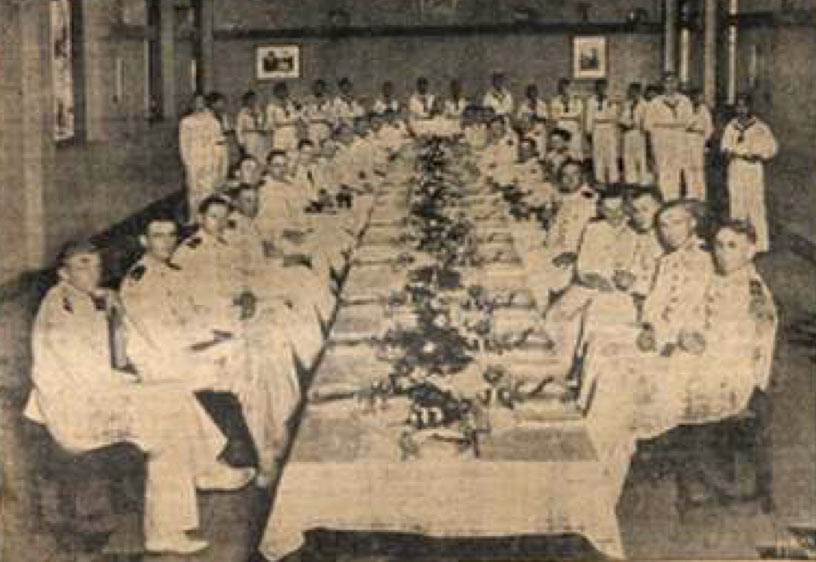
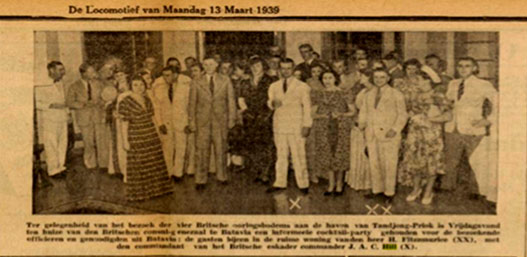
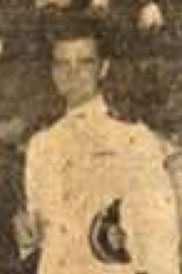
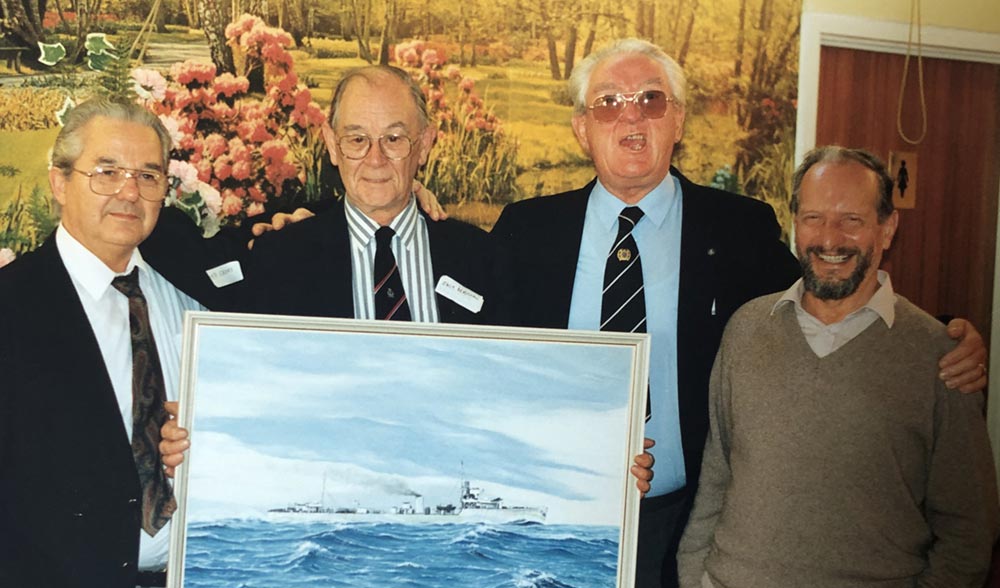
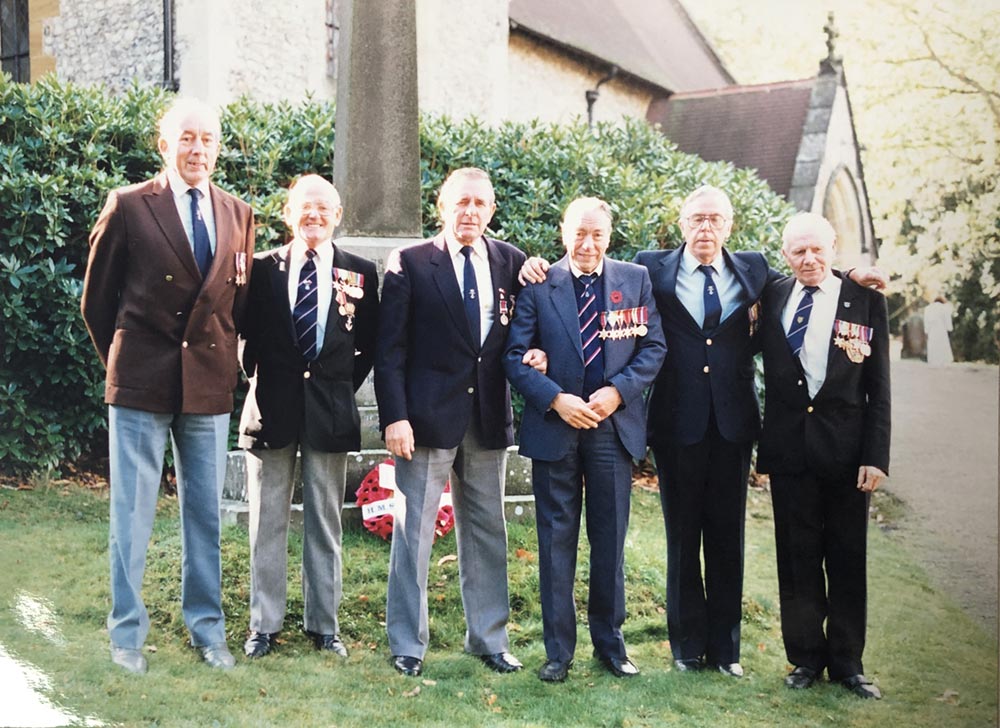
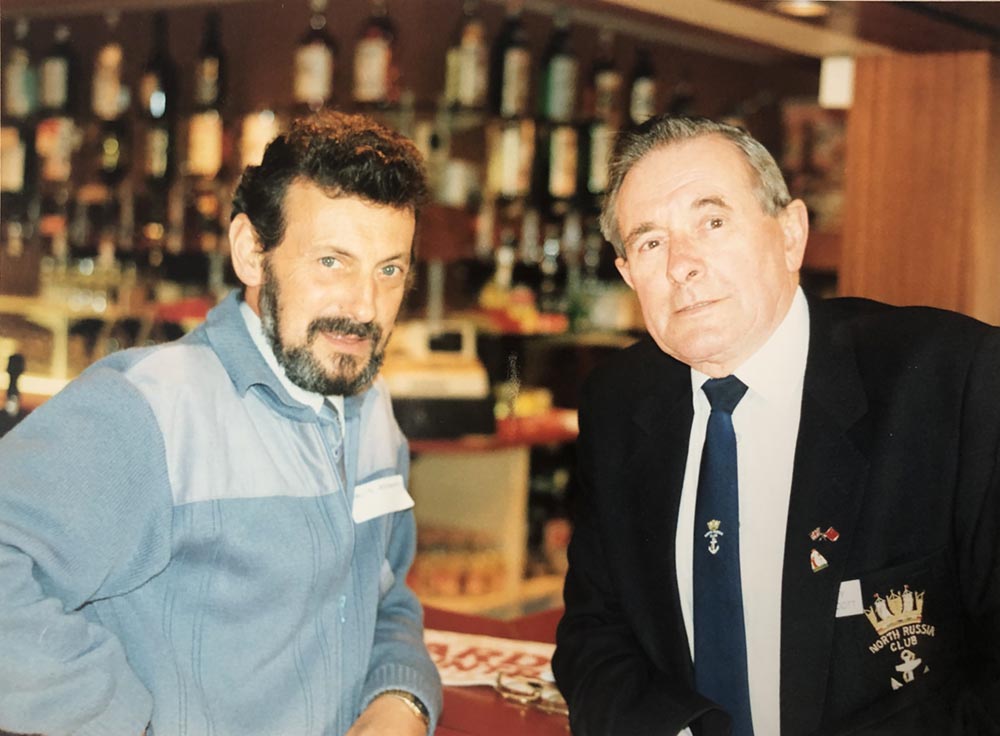
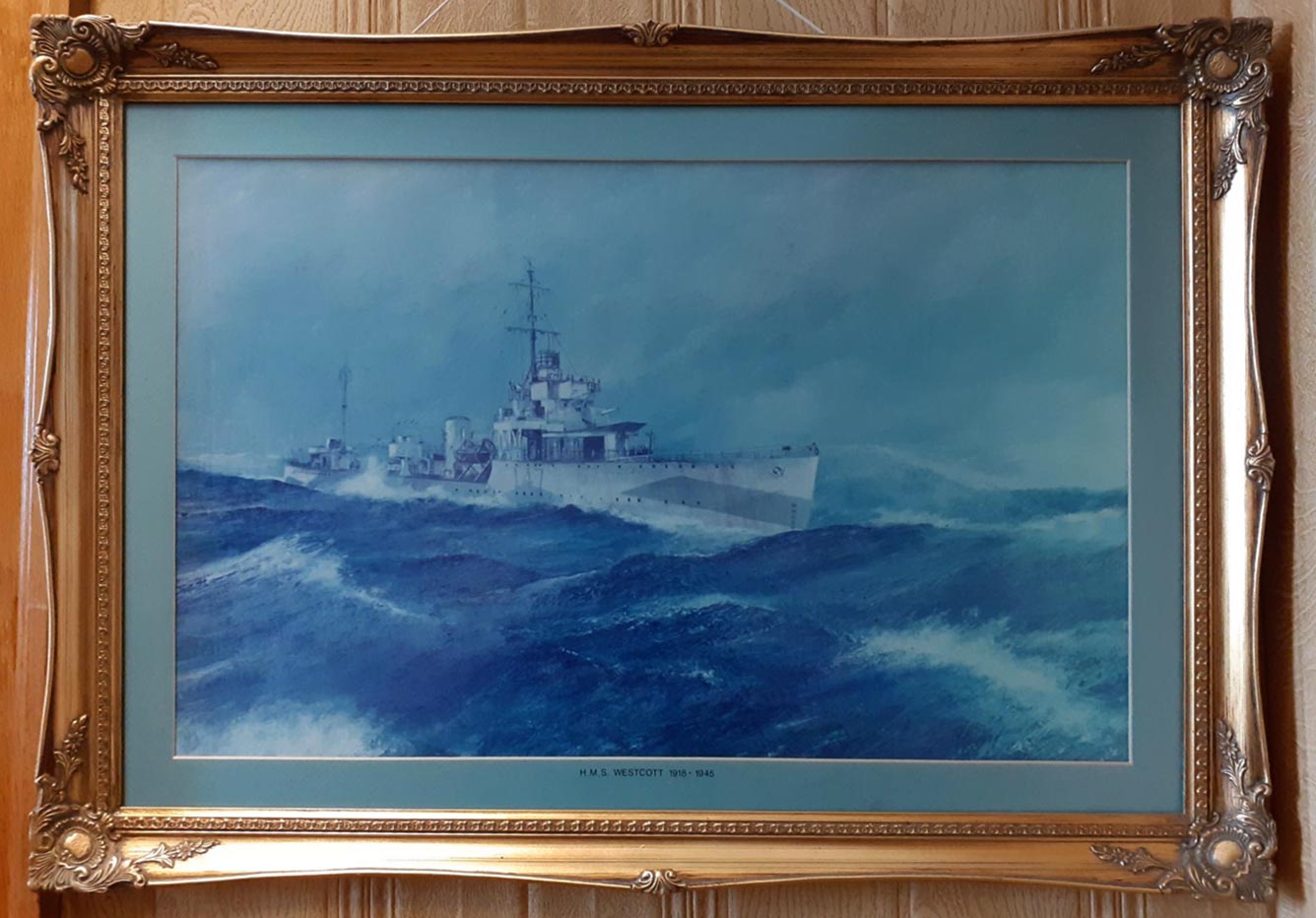
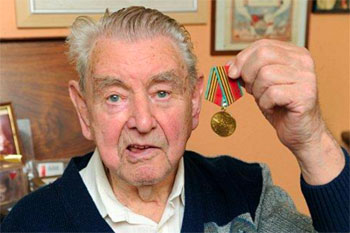
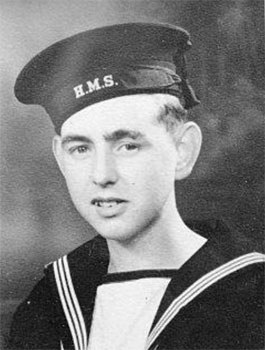 In October 2020 Ted Cross, a 95 year old former RDF Operator (Radar) on Westcott
in 1943-5 with a remarkable memory, recalled the places where
subsequent meetings of the Westcott Club were held. They took on a
regular pattern with two meetings being held each year and a Newsletter
edited by Stormy published. A one day meeting was held at the London
Welsh Club in April and a two or three day meeting in September or
October.
In October 2020 Ted Cross, a 95 year old former RDF Operator (Radar) on Westcott
in 1943-5 with a remarkable memory, recalled the places where
subsequent meetings of the Westcott Club were held. They took on a
regular pattern with two meetings being held each year and a Newsletter
edited by Stormy published. A one day meeting was held at the London
Welsh Club in April and a two or three day meeting in September or
October.